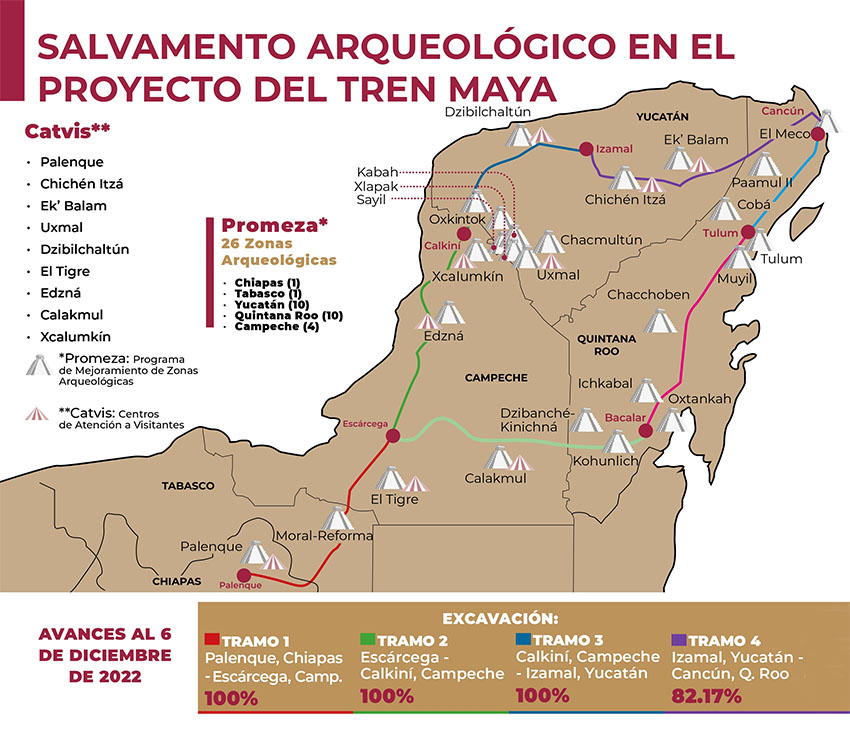An imposing, life-size sculpture of a headless human found during excavation work for the Maya Train has been temporarily nicknamed “Yum keeb” — the god of the phallus or fertility.
The finding occurred in the state of Yucatán in the archaeological zone of Oxkintok, about 55 kilometers south of Mérida. The limestone statue without a head, hands, lower legs and feet measures 1.65 meters tall, or about 5 feet 5 inches.
“He was found lying on his back and represents the human figure,” archaeologist Luis Pantoja Díaz said during a media tour of the area on Wednesday. “We see the marked pectorals, the middle part that could be the hanging belly and the part of the member.”
He also said one could see buttocks (which are clearly visible in the photo) and some lines on the back, such as those that delineate shoulder blades (which are not).
While the newspaper La Jornada used the terms falo (phallus) and miembro (member) in describing the figure, another newspaper reported nothing along those lines, or about fertilidad (fertility), explaining instead that the sculpture is that of a warrior.
Its lack of a head “surely represents a warrior who was a prisoner in combat,” said Diego Prieto, general director of the National Institute of Anthropology and History (INAH), as quoted by El Financiero.
Both sources said the sculpture was possibly used as an offering to the gods. It was found near a hieroglyph-laden staircase that was being cleaned and restored. Pantoja Díaz stressed that the figure is still being analyzed to determine its specific function, thus the “temporary” nickname. Even the statue’s status as the representation of a male is not 100% assured, he added.
Oxkintok was a Maya city that existed in the latter portion of the Mesomerican Classic Period (A.D. 250 to 900) and was the capital of the region before the emergence of Uxmal. Noted for its historical markers, such as pyramids and monuments, it is nestled among mountains that are covered in undergrowth — with lots of potential discoveries still to be made.

The Maya Train has been divided into seven sections and the INAH reportedly has completed its excavation work in sections 1-3 and 5, with No. 4 to be completed soon and sections 6 and 7 in the prospecting stage.
“We have uncovered information that will nourish the knowledge of the Mesoamerican Maya world for at least the next two decades,” said Prieto, the INAH director. “This work will undoubtedly impact the study of Maya cultures … over many, many years.”
Overall, according to INAH data through Dec. 6, findings on the entire Maya Train route include 31,306 structures including foundations, 1,541 ceramics and chiseled stones, 463 sets of bones or skeletons, 1,040 natural features such as caves and cenotes, 708,428 ceramic figures and fragments (from sections 1-4) and 576 pieces in the process of analysis.
The Maya Train, one of President Andrés Manuel Lopéz Obrador’s most ambitious projects, and one that has been challenged by various problems and issues, will pass through Tabasco, Chiapas, Campeche, Yucatán and Quintana Roo. Originally budgeted for nearly US $8 billion in 2020, it has now ballooned to up to US $20 billion, according to reports.
Last month, AMLO was quoted as saying that “the largest [current] railway project in the world” at 1,550 kilometers (963 miles) will be completed “in December 2023.”
With reports from La Jornada and El Financiero
